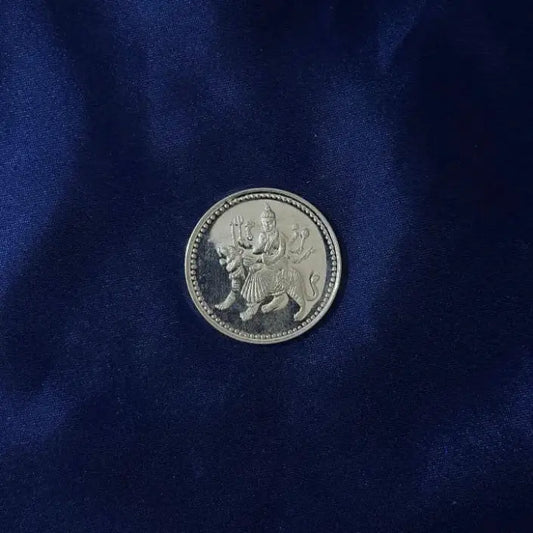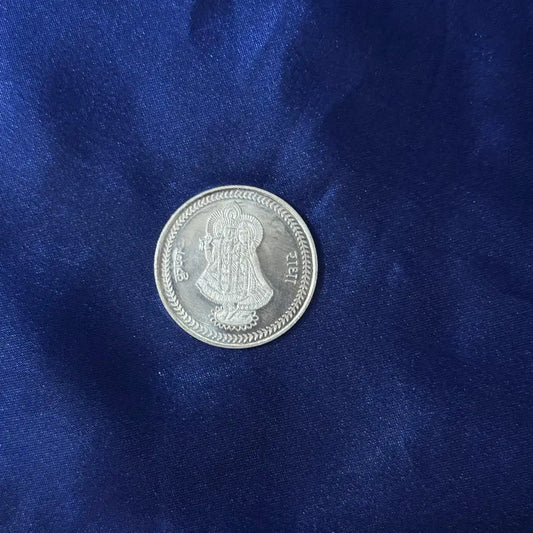
Shubho Vijayadashami and Diwali in West Bengal: From Durga Puja Sindoor Khela to Kali Puja
Share
Festivals in West Bengal are not just events on the calendar; they are deeply woven into the lives, faith, and traditions of the people. While Diwali is celebrated across India with lamps, sweets, and fireworks, the celebrations in Bengal are distinct because they combine the farewell of Durga Puja, the vibrant sindoor khela, and the spiritual grandeur of Kali Puja.
This blend of rituals makes the festive season in West Bengal one of the most colorful and meaningful in the country.

Durga Puja—The Heartbeat of West Bengal
Durga Puja is the cultural and spiritual lifeline of West Bengal. For days, pandals come alive with art, lights, and devotion, and the entire community immerses itself in worship and celebration. As the festival concludes on Vijayadashami, married women perform the traditional sindoor khela, where sindoor is applied to Goddess Durga and then to each other. This ritual reflects blessings for long marital life, prosperity, and togetherness. Unlike in many other states where Vijayadashami directly leads to Diwali preparations, in West Bengal, this transition is marked by the emotional farewell of the Goddess and the red-colored joy of sindoor khela.
Significance of Silver Coin in Durga Maa Puja in West Bengal
In West Bengal, every element of Durga Maa Puja carries symbolic meaning, and offering a silver coin is considered highly auspicious. Silver is believed to represent purity, prosperity, and the cool, calming energy of the moon. When devotees offer a silver coin to Goddess Durga during the puja, it symbolizes a wish for wealth, peace, and protection from negative energies.
Why Silver Coins Are Used
- Purity & Prosperity: Silver is associated with Goddess Lakshmi and wealth, so offering it during Durga Puja is a prayer for abundance.
- Durga’s Blessings: A silver coin signifies surrendering ego and material desires to Maa Durga, asking her to bless the family.
- Tradition: In Bengal households, placing a silver coin at the feet of the idol or in the kalash (sacred pot) during Durga Puja has been a long-followed custom.
- Symbol of Continuity: Many families preserve the coin after the festival in their puja room or locker, believing it protects their home until the next Puja.
How It’s Used in Puja
- Placed in the Kalash filled with sacred water and mango leaves, the silver coin becomes a symbol of endless prosperity.
- Offered at Maa Durga’s feet during Pushpanjali, it represents devotion in its purest, most precious form.
- Later, the blessed coin can be kept in the household puja space as a lifelong token of health, wealth, and divine protection.
In Bengali culture, the journey of Durga Puja culminates with Sindoor Khela — women dressed in white sarees with red borders, celebrating sisterhood, feminine power, and bidding farewell to Maa Durga with vermillion. Just as sindoor becomes a sacred symbol of blessings and unity, a Silver Coin from Dharmik carries forward that divine essence into your home.
Crafted in pure silver and embossed with holy symbols, these coins are more than keepsakes — they are auspicious offerings, meaningful gifts, and generational heirlooms.
✨ With Navratri, Durga Puja, and Diwali flowing into each other, Dharmik Silver Coins are the perfect sacred bridge between traditions — to place in your Kalash, to gift during Sindoor Khela gatherings, or to invoke Goddess Lakshmi’s blessings on Diwali night.
Bring home a coin that gleams not just with silver, but with faith, protection, and prosperity. 🙏🌸
The Spiritual Transition from Vijayadashami to Diwali
In West Bengal, the end of Durga Puja does not mean the end of celebrations—it marks the beginning of a new spiritual phase. The emotional energy of sindoor khela is followed by preparations for Diwali, which here is synonymous with Kali Puja. While the rest of India associates Diwali with Goddess Lakshmi, Bengalis dedicate this night to Goddess Kali, the fierce protector who destroys evil. This cultural shift makes the festive journey in West Bengal truly unique. Families who immerse themselves in Durga Puja rituals like sindoor offerings soon gather again for the grandeur of Kali Puja, ensuring the festive rhythm continues without pause.
The Significance of Kali Puja in West Bengal
The night of Diwali in West Bengal is illuminated with devotion to Goddess Kali. Temples and homes are decorated with oil lamps and candles, and special altars are created for Kali Puja. Devotees offer flowers, sweets, rice, and symbolic weapons to the Goddess, while chants echo through the night. Unlike Lakshmi Puja in other regions, Kali Puja emphasizes strength, fearlessness, and protection from negativity. The presence of sindoor and the memory of sindoor khela from Durga Puja still linger, showing how these rituals interconnect across festivals. For Bengalis, Diwali is not only about light but also about invoking Goddess Kali’s blessings to remove darkness from within and around.

Historical Roots of Diwali and Kali Puja in Bengal
Historically, Kali Puja gained prominence in West Bengal during the 18th century under King Krishnachandra of Nadia. He popularized the worship of Goddess Kali on the night of Diwali, making it an essential part of Bengali culture. Since then, the festival has grown into a grand event, with elaborate rituals, artistic pandals, and devotional gatherings. The link between sindoor khela and Diwali also has historical depth: both celebrate the feminine divine, one as the nurturing Durga and the other as the fierce Kali. Thus, the continuity of sindoor, sindoor khela, and Kali Puja shows how traditions in West Bengal have evolved while staying deeply rooted in spirituality.
Cultural Traditions Beyond Puja – Alpona, Diyas, and Fireworks
Celebrations in West Bengal during Diwali go beyond the puja rituals. Families decorate their homes with alpona—traditional white patterns made with rice paste—symbolizing purity and welcoming divine energy. Lamps and diyas are lit in every corner, linking the festival to the pan-Indian idea of light triumphing over darkness. Fireworks add sparkle to the night sky, but the central focus remains on Kali Puja. The fragrance of flowers, the glow of lamps, and the subtle traces of sindoor from the Durga Puja days create a festive environment that is both joyous and deeply spiritual.
Modern Celebrations – Youth, Media, and Global Reach
In modern times, Diwali and Kali Puja in West Bengal have also embraced technology and global connections. Young people share images of sindoor khela on social media, making it an iconic symbol of Bengal’s culture. Diaspora communities abroad recreate the rituals of sindoor, organize Durga Puja gatherings, and celebrate Diwali with Kali Puja, ensuring that traditions travel beyond borders. For the youth, festivals are not only about devotion but also about cultural pride, where sindoor khela and Kali Puja become emblems of identity. This evolving balance between tradition and modernity makes the festive season timeless in Bengal.
Symbolism of Light, Red, and Divine Power
Every festival in West Bengal is full of symbolism, and Diwali is no different. The lamps of Diwali represent hope and clarity, the sindoor of Durga Puja symbolizes marital joy and devotion, the act of sindoor khela reflects community bonding, and Kali Puja embodies strength and protection. Together, these elements create a spiritual canvas that highlights the balance of love, power, and unity. For devotees, participating in these rituals is more than celebration—it is a reaffirmation of faith in divine energy and cultural heritage.

FAQs on Vijayadashami and Diwali in West Bengal
Q1: Why is Diwali unique in West Bengal?
In West Bengal, Diwali is marked by Kali Puja instead of Lakshmi Puja, making it distinct from other states. The connection with Durga Puja rituals like sindoor khela also adds cultural depth.
Q2: What does sindoor khela represent?
Sindoor khela is a ritual where married women apply sindoor on Goddess Durga and each other, symbolizing marital happiness, prosperity, and unity.
Q3: How is Kali Puja celebrated in West Bengal?
During Kali Puja, homes and temples are decorated with lamps, offerings are made to Goddess Kali, and communities gather for devotional rituals on the same night as Diwali.
Q4: Is sindoor important only in sindoor khela?
No, sindoor is a sacred element in Bengali Hindu tradition, symbolizing marriage and devotion, but sindoor khela makes it a community celebration during Durga Puja.
Q5: How do modern youth participate in these festivals?
Young people celebrate sindoor khela, share festive moments on social media, and actively take part in Diwali and Kali Puja, blending tradition with contemporary expression.
Final Words
The festive season in West Bengal is a journey from Durga Puja to Diwali, tied together by the symbolic use of sindoor, the communal joy of sindoor khela, and the devotion of Kali Puja. Unlike elsewhere in India, where Diwali centers on Lakshmi, Bengal’s focus on Goddess Kali makes the festival both unique and powerful.
The red of sindoor, the laughter of sindoor khela, the lamps of Diwali, and the chants of Kali Puja together paint a cultural portrait of devotion, unity, and resilience. This combination ensures that festivals in Bengal are not just celebrated but lived, carrying forward the rich spiritual legacy of the land.
👉 Shop Your Durga Darbar Gold-Plated Idol Here:





